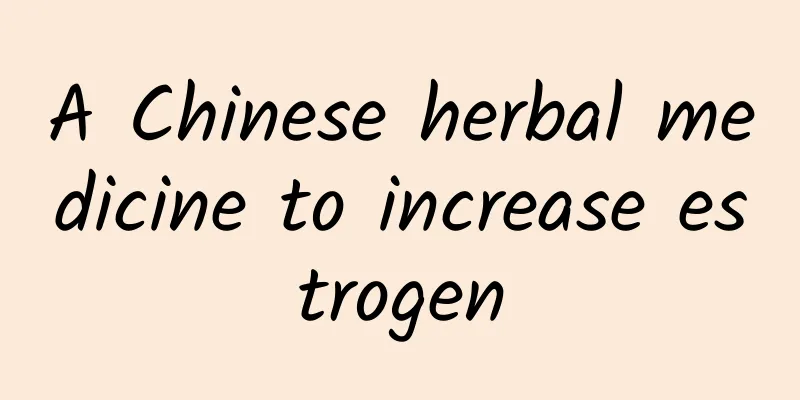The efficacy and function of Glechoma longituba

|
With the development of society and the close international exchanges, most people who study medicine have been seriously influenced by Western medicine, and fewer and fewer people are studying Chinese medicine, which has resulted in less and less understanding of Chinese medicine. Let’s talk about the effects and functions of the Chinese medicine Cnidium monnieri. [Alias] Big duck vine, stone vine, stone vine, and large-leaf sweet fruit. [Source] Medicinal material source: the roots and stems of the Rhamnaceae plant Camellia ternata. [Original form] Yellow-backed Camellia ovata is a vine-like shrub, 7-8m tall. The whole plant is hairless. Branchlets cylindrical, spreading, yellow or brown, sometimes powdery. Leaves are alternate; petioles are 1-2.5cm long, glabrous; stipules fall off early; segments are papery, ovate, ovate-elliptical or oblong, 7-15cm long, 3-7cm wide, obtuse or rounded at the apex, with a small cusp, base rounded or nearly cordate, green above, often golden yellow when dry below; lateral veins are 6-9 pairs on each side, convex on both sides. The flowers are bisexual, with panicles growing at the top of the twigs, and the pedicels are 2-3mm long; there are 5 sepals, which are ovate-triangular; there are 5 petals, which are broadly obovate and slightly shorter than the sepals; there are 5 stamens, which are the same length as the petals; the ovary is separated from the disk, has 2 chambers, and the style is 2-pronged. The drupe is nearly cylindrical, 7-11mm long and 4-5mm in diameter, with a small tip at the tip and a disc-shaped persistent disk at the base. It is purple-red or purple-black when ripe and has a sweet and sour taste. The flowering period is from June to August, and the fruiting period is from May to July of the following year. [Habitat distribution] Ecological environment: Growing on hillsides, thickets or under forests at an altitude of 1200-4000m. 【Nature and flavor】 Bitter; pungent; cool 【Functions and indications】 Clears away heat; relieves pain; promotes blood circulation and regulates menstruation. Mainly used for chest and abdominal distension and pain; dysentery; leucorrhea; traumatic injury; muscle and bone pain; metrorrhagia; irregular menstruation [Usage and Dosage] For oral use: decoct in water, 9-15g. For the treatment of traumatic injuries, up to 30g can be used. 【Excerpt】 Chinese Materia Medica I believe that the above introduction to the knowledge about Glehnia littoralis will help you understand more about Glehnia littoralis. In our daily life, we can eat Geranium to regulate and improve our body. |
<<: The efficacy and function of Niu Er San Xue Cao
>>: The efficacy and function of Niu Bian
Recommend
How can we avoid risks in the face of heavy rain or even floods?
Affected by the northward movement of the remnant...
Watching videos on your phone, getting more and more addicted - is being addicted to social media a disease?
In addition to meeting strict disease diagnostic ...
Blood is obviously red, so why do blood vessels appear blue-green?
Recalling the process of intravenous drip, I beli...
What are the effects and functions of Millettia reticulata
The medicinal material Millettia reticulata can r...
The efficacy and function of Chinese herbal tea
In our lives, many people often have phlegm in th...
Is Astragalus effective in treating high blood pressure?
Many of our friends have varying degrees of high ...
Once a jay hides its food, does it really remember it?
The sower in the forest - Jay The jay belongs to ...
Proba-3 mission: opening a new era of space-based “artificial solar eclipse” observations
Schematic diagram of the Proba-3 mission. Image c...
Fantastic mammatus clouds appear in the sky, people with claustrophobia should beware
Two days ago, a cloud appeared in the lead-gray s...
Treating gray hair with processed Polygonum multiflorum
In today's life, with the increasing competit...
Over 100 days! Wang Yaping sets a new record again!
Launched on October 16, 2021 Shenzhou 13 It will ...
Can you detect cancer by drawing blood? Is the popular tumor marker screening in physical examinations really useful?
Screening for cancer using "tumor markers&qu...
Have a healthy new year! Let’s check the “small hidden dangers” in the refrigerator first
During the Chinese New Year, many families have t...
If you are in a hurry, please take the stairs! It is not a good habit to walk on the left and stand on the right when taking the escalator →
Review expert: Wang Shengwei, Senior Engineer, Be...









